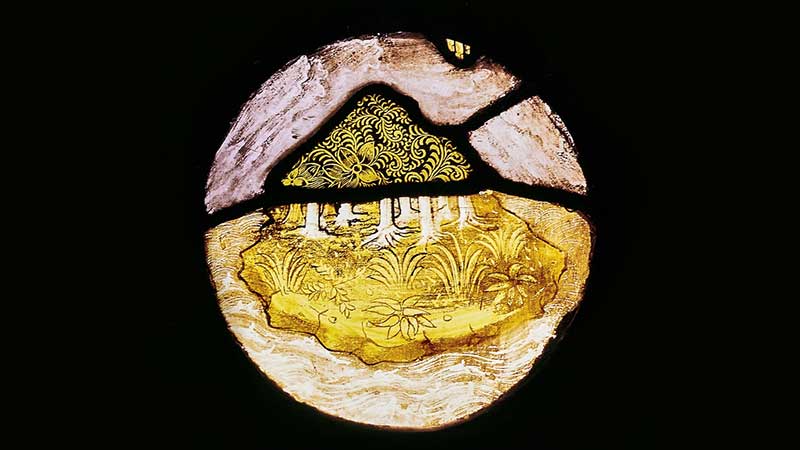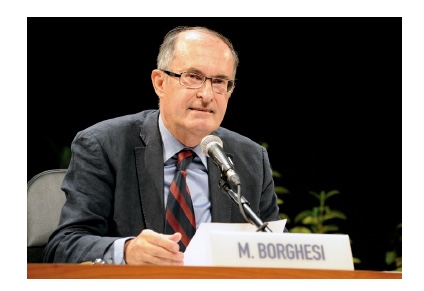The key to the relationship between unity and diversity.
By Massimo Borghesi
The night of February 28th, 2013, a white helicopter took off from St. Peter’s, flying over the city of Rome, accompanied by the sound of the bells of the capital’s churches. It carried Benedict XVI, the former Pontiff, the first ever to resign from his ministry in the modern area. The greatest theologian of our time found himself conducting a difficult legacy from John Paul II, with a Church marked by problems and scandals which altered and stained its image in the eyes of the world. His determination to solve and tackle these problems was insufficient considering his deteriorating strength.
His successor, the archbishop of Buenos Aires, Cardinal Jorge Mario Bergoglio, came “from the other end of the world.” Ratzinger’s appeasing kindness was replaced by Francis’ impetuous sweetness, his simple way of speaking, his direct manner, and his way of touching people’s hearts: a persuasive testimony to the point of modifying, in a few years, since March 13th 2013, the image of the Church, whose heavy burden of a legacy is no longer the target of accusations. Francis’ worldwide success has not yet filled, as John Paul II’s did in his time, the progressive void of churches; it supports the humble faith of the people, those who are the “invisible” on the stage of history. However, the encounter between the Pontificate and popular reality has not received applause or recognition. As Agostino Giovagnoli states:
His popularity, however, is not extended through all places or in all environments. Above all, it is the novelty he brings that is not always accepted or understood. This is the case with most European leaders, especially intellectuals and academics. In fact, in Europe, the world of culture seems at least uncertain about him. Of course, there have not been many visits from Pope Francis to great cultural institutions and meetings with representatives from academia have been few. No lectures by him are remembered as those in the University of Regensburg or the Collège des Bernadins in Paris by Benedict XVI. In addition, he has seldom talked about cultural activities or intellectual problems explicitly. But none of this is enough to explain the distance between Francis and the European world of culture.” (1)
Actually, as Giovagnoli observes, it is not true that Francis is distanced from culture, and European culture in particular. “In his writings there is a more complex and elaborate thought than it seems. Despite common assumptions, the more his documents, speeches, and homilies are read, the more it becomes apparent that Francis knows the world of intellectuals and holds firm convictions on the role of culture in contemporary society.” (2) Until now, this “complexity” in Bergoglio’s thinking has not found the attention it deserves, but for a few exceptions. (3) On the contrary, critics proliferate: last-minute theologians who make deductions on the Pope’s vision through news articles.
Two objections are usually repeated with overwhelming monotony. The first is that Francis is a populist, an Argentinian “Peronist” lacking in the understanding of the subtle distinctions of liberal and modern Europe. The second is that Bergoglio does not have the theological and philosophical preparation for his role as Pope. Both criticisms come from the entirely Anglo-American and European presumption that Latin America is not up to Western standards. This view has been well expressed by Angelo Panebianco:
Being children of our own history, it is inevitable that this Pope, like all his predecessors, brings with him, apart from his faith and interpretation of the Gospel, his experiences, ideas and feelings that are part his land –a tradition that does not necessarily coincide with our own. In a country with a mature capitalism, as Italy is in spite of everything, it is possible for there to be more than a few people, even among Catholics, who disagree with Bergoglio in matters of work and benefits or –to provide another example– who do not think that contemporary wars are not just the product of greedy capitalists’ desire for profit. It is also possible that many realize that the Pope’s economic concepts are derived from a interpretation of the Scriptures, but perhaps also from a distinct anti-capitalist tradition from the country he comes from. In Italy, we have excellent scholars dedicated to the study of Latin America in general as well as Argentina and its history. It may be time for them to start looking at the cultural connections between the Pope and that tradition. (4)
For his critics, Francis’ limitations are therefore marked by his origins, by his being “Argentinian.” Panebianco’s judgment is not isolated. Less moderately, Loris Zanatta echoes those words, stating that Bergoglio “is the son of a Catholicism that is impregnated of visceral anti-liberalism, built through Peronism, and guided by the Catholic crusade against Protestant liberalism, whose ethos is cast like a colonial shadow over Latin American Catholic identity.” (5) It is the same criticism we find in the liberal philosopher Marcello Pera, known for the book he co-authored with Joseph Ratzinger, Senza Radici (2004), where he forecasts a new “civil religion,” and in the context with the war against Iraq, the return to a warrior spirit instead of pacifism in Europe. According to Pera, “both John Paul II and Benedict XVI gave their missions a clear Western emphasis. They usually addressed Europe and there was an evident Western perspective, in which our continent was viewed as the cradle of Western values. Francis, on the other hand, has a purely South American point of view.” (6) His openness to the issues of immigration are regarded as clear evidence that he “detests the West, aspires to destroy it and does everything he can to achieve this (…) The Pope shows all the South American biases against North America, the market, liberties, and capitalism.” (7) For Pera, “he has a South American viewpoint of Peronist justicialism, which has nothing to do with the Western traditions of political liberties and their Christian source.” (8)
In absolutist tones, Panebianco, Zanatta, and Pera express the distance from which the secular and liberal world sees Bergoglio. The Westernist, capitalist, liberalist ideology sees in the “Argentinian” Pope an obstacle to the single dominant thought of the globalization era. The Pope is an adversary and is treated as such. These critics are joined by conservative Catholics of a theocon orientation, analogous in terms of mentality to a large part of the Catholic world in the USA. With them returns the West-South America dichotomy, typical of the secular liberal right (9). The simplification of terms –populism, Peronism– without any research into their historical articulations results from a logic of delegitimization, from intolerance of any critique against the globalization model. What is surprising about the Pope’s critics is their lack of evidence and depth, as if the current Pope did not have a cultural background or ecclesiastic experience worthy of recognition. [see inset titled “The Church in a Transformed World”]
Massimo Franco appropriately writes that “whenever there is a tendency to describe Bergoglio as a kind of South American Don Camillo, there seems to be involuntary mystification. The former Archbishop of Buenos Aires cannot be labeled by European categories or, even less so, Italian ones. He is not a country priest, like Giovanni Guareschi’s character, but an urban priest from a megacity. His simple language is the result of a deep knowledge of the territory and its inhabitants, and of a long “in-the-field” building process of his identity (even lexical) as a cleric” (10). Bergoglio’s language is “simple” because he wants to be simple. This simplicity is the product of reflection and evangelical straightforwardness, not a limitation of expression. Behind it there is a rich and original thought process, belonging to the school of the Jesuits, and which is nurtured not only through Argentinian teachers but mainly European ones. Young Bergoglio’s main references as a philosophy and theology student at Colegio Máximo in San Miguel were French Jesuit intellectuals Henri de Lubac, Gaston Fessard, and Michel de Certeau. Some belong to the School of Lyon. These are his “masters.” They are “European” masters, the same who guided the reflection of who was to become both his friend and role model, the Uruguayan Alberto Methol Ferré, director of the journals Víspera and Nexo, which Bergoglio avidly read, and the greatest Latin American Catholic intellectual of the second half of the 20th century.
This mixture of European and Argentinian masters is complex and should be looked into if we are to get away from the simplifications that find fertile ground in ignorance of facts. Rodrigo Guerra López observes:
The lack of research on Latin American philosophers and theologians in Europe is recurrent. Sometimes it seems to me that certain scholars from Europe (and the U.S.) think of Latin American thought as inferior or secondary when compared to the intellectual production from Germany, France, and Italy, among other countries. This would be a mere anecdote if it were not relevant, in my judgment, to understand what is happening with Francis (…) When John Paul II was declared Pope, his intellectual and pastoral profile required additional effort to understand his teaching. For many, it was necessary to study the history of Christians in Poland, the various philosophical traditions of Wojtyla’s roots, and to delve into his arduous philosophy in order to deeply understand, for example, the true reach and meaning of Redemptor hominis, Laborem exercens, or what would be known as “theology of the body.” People like Rocco Buttiglione, Massimo Serretti, Tedeusz Sytczen, Angelo Scola, among others, did incredible in-depth and explanatory work that is still fruitful today. In my opinion, a similar effort is necessary with Jorge Mario Bergoglio, S.J. How many debates would we avoid if we showed interest in our Pope’s intellectual and pastoral biography! In the main academic institutions dedicated to the dissemination and understanding of the pontifical magisterium, teachers and students have scarcely done any serious and systematic study of the writings of Jorge Bergoglio and his beloved authors, e.g. Lucio Gera, Juan Carlos Scannone, or Methol Ferré; not to mention a wider and deeper study of the theology of the people or the magisterium of the episcopate of Latin America. (11)
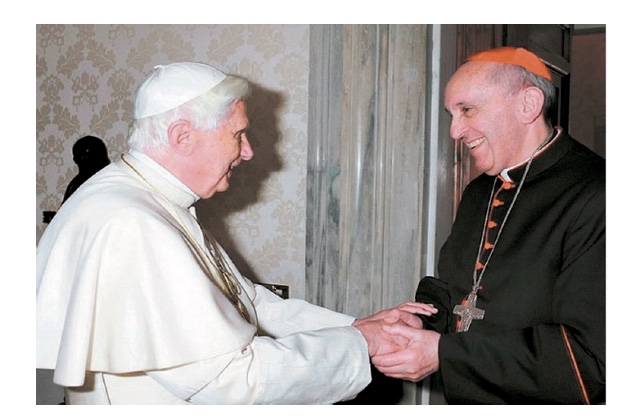
Guerra López’s opinion is entirely justified, more so considering that readers have access, in Italian or English, to an excellent biography of Jorge Mario Bergoglio, by Austen Ivereigh, who reconstructs in exact detail the formation, even at an intellectual level, of the future Pontiff. (12) It also is an essential text to understand Bergoglio’s “political” position, which is so often misunderstood by his critics. In Ivereigh’s words:
Francis's radicalism is not to be confused with a progressive doctrine or ideology. It is radical because it is missionary and mystical. Francis is instinctively and viscerally opposed to “parties” in the Church: he anchors the papacy in the traditional Catholicism of God’s holy faithful people, above all the poor. He will not compromise on the hot-button issues that divide the Church from the secular West –a gap liberals would like to close by modernizing doctrine. Yet he is also, just as obviously, not a Pope for the Catholic right: he will not use the papacy to fight political and cultural battles he believes should be fought at the diocesan level, but to attract and teach; nor does he feel the need endlessly to repeat what is already well known, as he instead wants to stress what has been obscured –God’s loving-kindness and forgiving mercy. And where Catholic conservatives would like to speak more about morality than social issues, Francis is happy to do quite the opposite, to rescue Catholicism as a “seamless garment.” (13)
Ivereigh’s judgment is important, given that it makes it possible to go beyond the trope of opposition from Francis to Benedict XVI, supported by conservatives. In fact, what we see is diversity of styles and accents, not of content…
If the long Wojtyla-Ratzinger pontificate was characterized by the teaching of the Church on moral and social issues, with a strong emphasis on “anthropology” linked to the idea of “natural law,” Pope Francis appears to be motivated by a more historical and cultural vision, in line with the Latin American theology he comes from, and by a more spiritual than theological vision of the ministry of the Roman pontificate. The pontificate of Benedict XVI, “the theologian pope” (in the sense of an academic theologian), may be an exception in the history of modern Catholicism.
The shift of emphasis with Bergoglio, from the theological to the spiritual papacy, entails some uncertainties regarding the future structures of Catholicism. But presenting an alternative to Ratzinger does not make Bergoglio a progressive or a liberal (just as Ratzinger was not a reactionary). Bergoglio is a “social Catholic” with a subtle and complex vision of “modernity”. (14)
This “social” Catholicism, at its peak during the postconciliar years and then forgotten in the age of globalization, irritates part of a the Catholic world that is committed to the values of life, but not as committed to social values. That world criticizes Francis’s supposed theological progressivism, which does not exist, based on the distrust of a Pope deemed to be excessively critical of the values of the market. In fact, the Pope criticizes a society which excludes, reduces work opportunities, and creates new divisions; also, he opposes the idea of Catholics forming a political party or placing the Church in the barricade.
Francis is the man of reconciliation between the histories of South American division, with tragic features. The equivalent of his reforms in the Vatican, controversial and opposed, constitutes, at a global level, the destruction and elimination of all the ideological debris and waste left by the Cold War. In Latin America, this means tearing down the last “Berlin wall,” that is, the “Havana wall,” as well as other invisible ones, hidden in secret files and in the people’s collective memory. It means leaving in the past the civil wars fought in the name of Marxism and capitalism, with the Catholic Church and its bishops as victims and sometimes accomplices. There was great shock when Bolivian President Evo Morales presented Francis with a gift: a crucifix with the sickle and hammer, made by Father Luis Espinal, who was killed in the 80s for defending the poor and democracy. Without noticing the perplexity in Francis’s face at the time, some interpreted this as a posthumous espousal of liberation theology, inspired by Marxism. In fact, with that gesture Morales was acknowledging in the Pope a type of leadership that had never before been attributed to the Church, manifesting an attitude of subordination and submission that was unthinkable a few decades before. (15)
For Massimo Franco, “Francis has destroyed Communist revolutionary myths by offering an alternative to popular mottos: peaceful, inclusive, but not less clear when condemning what he has called the technocratic paradigm and inviting us to resist it.” (16) It is the same paradigm that has been criticized by Romano Guardini, one of Bergoglio’s esteemed authors, and by Augusto Del Noce, a referenced author for Methol Ferré. It is the model that excludes the “useless,” the “discarded,” those who are not productive, the unemployed, the poor, the elderly, those born in poorer conditions and those not yet born, the gravely ill, the weak in general. The way out is a path of reconciliation between the weak and the protected, which makes agreement and therefore social and political peace possible. The whole of Bergoglio’s thought system is that of reconciliation. It is not an “irenic,” optimist, naïvely progressivist way of thinking, but, on the contrary, a dramatic thinking, “tensioned,” which having matured during the course of his Ignatian studies in the 60s, finds its first formulation in the 70s, divided between the military right-wing and the revolutionary left-wing –an opposition also signaled by the Church and the Society of Jesus. This originates the idea of a “polar” and “antinomian” dialectic which constitutes the thread of his thought, his original conceptual core.
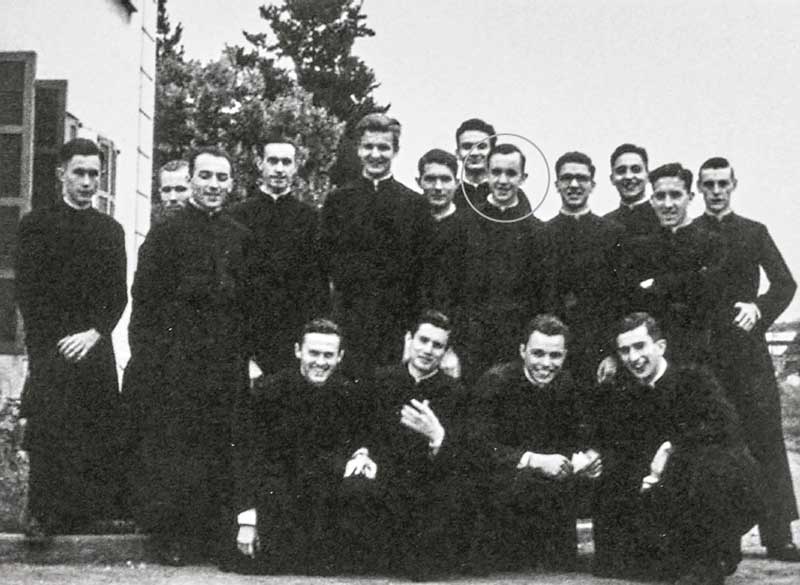
Bergoglio has battled against a synthesis of opposites that tore historical reality, not an “equidistant” synthesis or a mere “centrist” solution, but a theoretical/practical/religious attempt to suggest an antinomian unity, an agonic solution obtained through contrast and, therefore, a dialectical vision in which reconciliation is not entrusted, as in Hegel, to philosophical speculation, but to the Mystery that acts in history. He got this model from Gaston Fessard and his fundamental work La dialectique des exercises spirituels de saint Ignace de Loyola, published in 1956. Later, during his stay in Germany in 1986, Bergoglio was able to compare this perspective with the rigorous study of the system of polar opposition developed by Romano Guardini in his work from 1925, Der Gegensatz, Versuche zu einer Philsophie des Lebendig-Konkreten. Since then, Guardini, whose philosophical point of view was to be the subject of Bergoglio’s doctoral thesis, became the author who accompanied him in his reflections on the social and the ecclesial motivated by his attempt to understand antinomies and their solutions. Bergoglio’s thinking, similar to Methol Ferré’s in many aspects, comes to be a symphony of opposites. It is a philosophy that is found in the course of Catholicism, understood as coincidentia oppositorum, following Adam Möhler, Erich Przywara, Romano Guardini, and Henri de Lubac. As Bergoglio said while still a cardinal:
Harmony, I’ve said. This is the right term. In the Church, harmony is made by the Holy Spirit. One of the first fathers of the Church wrote that the Holy Spirit “ipse harmonia est,” It is harmony itself. Only He is the author of plurality and unity at the same time. Only the Spirit can give way to diversity, plurality, multiplicity, and at the same time create unity. Because when it is us who try to create diversity, we provoke divisions, and when it is us who want to create unity, we give rise to uniformity and homogeneity. (17)
It is the same perspective he reiterated as Pope:
In other words, the same Spirit creates diversity and unity, and in this way forms a new, diverse and unified people: the universal Church. First, in a way both creative and unexpected, he generates diversity, for in every age he causes new and varied charisms to blossom. Then he brings about unity: he joins together, gathers and restores harmony: “By his presence and his activity, the Spirit draws into unity spirits that are distinct and separate among themselves” (Cyril of Alexandria, Commentary on the Gospel of John, XI, 11). He does so in a way that effects true union, according to God’s will, a union that is not uniformity, but unity in difference.
(…) This happens when we want to separate, when we take sides and form parties, when we adopt rigid and airtight positions, when we become locked into our own ideas and ways of doing things, perhaps even thinking that we are better than others, or always in the right, when we become so-called “guardians of the truth.” When this happens, we choose the part over the whole, belonging to this or that group before belonging to the Church. We become avid supporters for one side, rather than brothers and sisters in the one Spirit. We become Christians of the “right” or the “left,” before being on the side of Jesus, unbending guardians of the past or the avant-garde of the future before being humble and grateful children of the Church. The result is diversity without unity. The opposite temptation is that of seeking unity without diversity. Here, unity becomes uniformity, where everyone has to do everything together and in the same way, always thinking alike. Unity ends up being homogeneity and no longer freedom. But, as Saint Paul says, “where the Spirit of the Lord is, there is freedom” (2 Cor 3:17). (18)

In this complex relationship between unity and diversity lies the nucleus of Bergoglio’s “Catholic” thought. Here, his three polar pairs take form (wholeness-limit; idea-reality; globalization-localization) with four principles: time is superior to space; unity is superior to conflict; reality is superior to the idea; the whole is superior to the part. This is the beginning of his classical doctrine of the transcendentals of Being (beautiful-good-true), in close contact with the theological reflection of Hans Urs von Balthasar, a fundamental doctrine that constitutes the key element in the relationship between Mercy and Truth in the contemporary world. If, as Balthasar asserts, only love is credible, then the cosmo-theological way of the medieval and the anthropological way of the moderns must give way, in the time of relativism and nihilism, to Mercy as the “manifestation” of Truth. (19) It is the evangelical way, the kerygmatic path that is at the core of the pontificate, along which Christianity can return today to the same dynamic as the beginning. This is a point that the conservatives vigorously oppose, persisting, as the modernists, in holding the opposition between Mercy and Truth.
Hence, from a thorough analysis of the roots and the development of Jorge Mario Bergoglio’s thinking arises, for the European scholar, a framework of extraordinary wealth. This is nurtured by various contributions, linked to each other by a profound logic. As Diego Fares writes:
The reference to Guardini, with his phenomenological capacity of “seeing” the “living figures” in which the parts are understood in terms of the whole and the whole in terms of the parts, seems to give coherence to that which Pope Francis tells us. (…) Without leaving behind Erich Przywara and his idea of God as ever greater and the Spirit that sets everything in motion and creates harmony in diversity; and Hans Urs von Balthasar, with his ordering of the transcendentals, which places Beauty and Goodness (always dramatic) before Logic; with his way of opening all finite philosophical truth to Christ (to make all truth go towards Christ) and his art of clarifying transposition (which brings unity to multiplicity and translates the one Word into many, always with a look of creative and merciful love). (20)
We are facing a scenario made of cultural exchanges between Europe and America, and of interweavings from which the Catholic communio strongly emerges. Bergoglio represents, with his apparent simplicity, a complex figure. He himself is, with his personality, a complexion oppositorum. This man, criticized as pontiff for being too concerned by matters of the world, is a “mystic.” The depth of his thought and his soul is nurtured in the Exercises of Saint Ignatius, in the mystic current of the Society of Jesus, which unites contemplation and action. As Father Antonio Spadaro writes: “The key to his thought and action needs to be sought and found precisely in Ignatian spiritual tradition. The Latin American experience is embodied in this spirituality and is to be interpreted under the same light in order to avoid misinterpreting Francis by falling into trite stereotypes. His own episcopal mission, his style of acting and thinking are marked by the Ignatian vision, by the antinomian tension to be always and in whatever way in contemplative actione. (21) Peter Faber, Ignatius’ companion and tireless traveler in a Europe that was divided by religious wars, the sweet and gentle proclaimer of the Gospel and the peace of Christ, is his model. A “mystical” way of thinking is an open thinking which does not close the cracks. As Francis declared: “The mystical dimension of discernment never defines its edges and does not complete the thought. A Jesuit must be a person whose thought is incomplete, in the sense of being open-ended.” (22) For this reason, Bergoglio’s antinomian dialectic is, unlike Hegel’s, an “open” dialectic. His syntheses are always provisional; they must always be sustained and reconstructed, because reconciliation is the work of God and not mainly of humans. This explains his criticism against a “self-referential” Church, locked up in its own “immanence,” marked by the double temptation of Pelagianism and gnosticism. Christians are “decentered,” the point of balance between opposites being outside of themselves.

